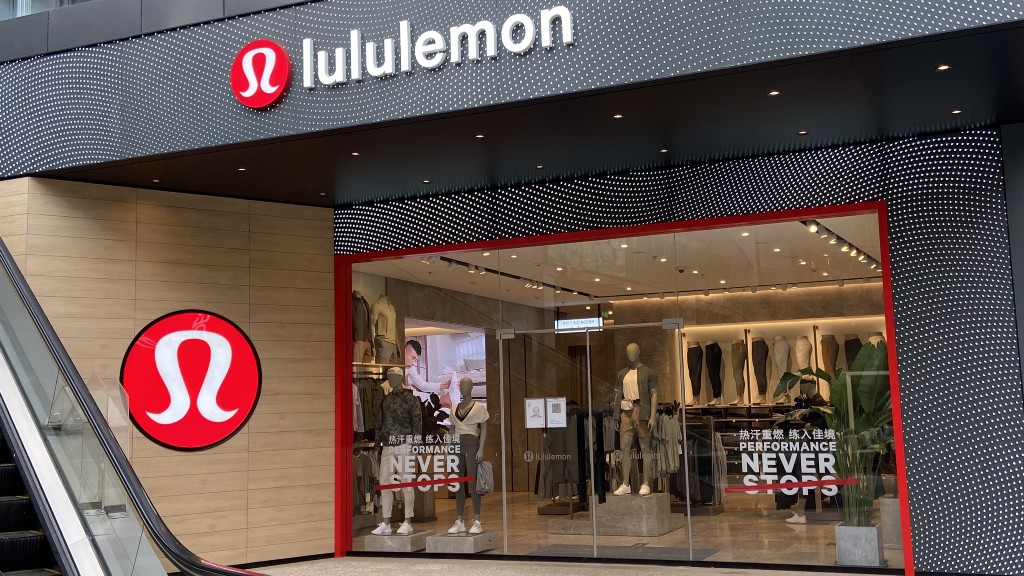A reciprocal relationship between societal shift and innovative design.

Design has evolved from a pragmatic methodology towards a strategic influence over the past decades; designers have engaged in complex social problems making significant contributions. Our observations convince us that the need has emerged for a better understanding of how design and the ever-changing world reform each other reciprocally.
I will start this article with a recent societal shift component — gender equality, and examine the importance of a societal shift in driving radical innovation and vice versa. The purpose is to provide a juxtaposed frame for designers to calibrate their worldview and experiential inspiration to address innovation for social meanings.
When I first moved to the U.S. in 2006, I was astonished that sports were equal to men and women as they played together on a daily basis. Physical exercises seemed like a routine for women, like eat, sleep and love. To someone like myself who grew up in China, that was not remotely as ordinary in Beijing or Shanghai in the early 2000s, not to mention the rest of the country, where sports were mainly gendered. Girls were not encouraged to participate in athletic activities since childhood equally as boys. In East Asian countries, women’s athletic activities were not seriously considered a cultural taboo; however, they were never a cultural fit. Playing sports was not a commonly accepted competency for women, nor on the list of criteria for the outmoded understanding of beauty. Sportswear was a sign of a sloppy lifestyle or a questionable personal taste for women.
Fortunately, history has subtly changed for women in Asia and around the world. Now women are empowered to take ownership of life and embrace personal choices. Consequently, innovative design and products are born throughout history and socio-economic movements to allow women to live life to the fullest.
Radical Innovation and Meaning-Driven Innovation
“Radical product innovation is driven by either advance in technology or a deliberate change in the meaning of the product, rather than being driven by the human-centered design philosophy widely used in product design.” Since the overwhelming majority of successful innovations exploit change, multiple social and technology phenomena often happen synchronously to cultivate a culture of innovative ideas. In this article, the change in the meaning is driven by gender equality.
Meaning-driven radical innovation is an example of social determinism. It is exciting to see products and innovations are born inspired by gender equity and equality, unexpectedly that some of them are now working to motivate women to aspire to an equal life as men. Furthermore, women are not content to wait for their lives to be changed by these innovative products; they try to be more involved in designs to change their own lives proactively.
From designed-for-women to design-by-women
We are in a historical moment when women may be granted more equal rights in every aspect of life, for instance, education, family roles, and by extension, fashion or romantic relationships. Women today are more likely to want to take charge of their own lives, wear clothes that fit their lifestyles, and date people of their own choosing.
Fashion and Fabrication
Not many would argue that yoga pants are a combination of engineering marvel and social innovation in recent years. The story of yoga pants begins in 1997 when Canadian innovator Chip Wilson participated in a yoga class and recognized the absence of functional yet stylish athletic clothing for women to accommodate yoga’s wide range of movements. Having managed snowboarding and surfing businesses privileged him to start a new sportswear product series with that insight. In 1998, he started a yoga-inspired design-and-fashion business called Lululemon that quickly sparked a new category and a market known as “athleisure” in the following decades.
Yoga pants have flourished, accompanied by the popularity of yoga has skyrocketed due to health consciousness. A study shows that the number of yoga practitioners in the U.S. increased to 36.7 million in 2016, up from 20.4 million in 2012, and 72 percent of U.S. practitioners are women. On the other hand, Lululemon has contributed to yoga’s commodification since it has prompted women to practice. In strictly financial terms, Chip Wilson’s 1997 session may have been the most consequential yoga class in its 2500 years existence.
A fabric revolution also accompanied the Lululemon innovation. “Radical product introductions could always be traced to the introduction of a new technology that provided new affordances to the designers or to a new meaning assigned to the product and its uses.” Technological improvements to synthetic fiber have made it more flexible, durable, and washable than natural materials. Following the original stretch fabric, Luon, debuted in 2005, Lululemon introduced several materials specifically developed for each activity, from running to dancing. Now that the meaning is dominant, competitors have been following and investing significantly in fabric technologies, including moisture-wicking fabric, compression fabric, or odor-reducing fabric.

Rather than yoga contributing to yoga pants’ invention, yoga pants have changed women’s motivation to participate in athletic activities. The notion of fitness has also expanded and diversified. Beyond “traditional” activities such as jogging or yoga, women have tried new sports that used to be seen as gendered, such as boxing. Moreover, women are widely convinced that workout is a new hangout. Athletic clothing soon becomes more about showing appreciation for a generally active way of life.
However, sportswear was traditionally a men’s market in the past. While women are leading the athleisure culture now, it has transformed how retailers design their products. Two decades later, along with the long decline of formality in fashion, yoga pants have conquered the closet representing the attire they can wear for many different social occasions — from running errands to the office. “Fashion trends seesaw constantly, but rarely does an entire category shift.” The meaning of the design has changed from single-purpose sportswear to multi-occasion casual wear fitting women’s modern life. That said, the rise of yoga pants happens on the right side of history at the right time. Today, in Los Angeles or London, Berlin or Beijing, women share the same mindset towards a happier and healthier life and a similar fitness ideology with a timely synchronous fashion aspiration. Consequently, Lululemon has become a status symbol that empowering women to be liberated towards a desirable fashion and lifestyle.
Romance and Relationship
Designers have taken gender justice enlightenment into the next sphere from real life to the online world. However, before the advent of Bumble, most digital innovations are still led by men and designed for women from male perspectives.

In 2014, Whitney Wolfe Herd created Bumble to challenge the unwritten set of rules and archaic gender norms controlling dating. Unlike other dating platforms, Bumble requires women to make decisions. It encourages them to take control — in heterosexual pairings only female users can make the first contact with matched male users. “By giving women control over the initial contact, Bumble feels more polite and walled-off than competitors.”
A traumatized cyber abuse experience intertwined with a sexual discrimination and harassment lawsuit with Tinder — another popular dating platform she co-founded in 2012- made Wolfe Herd realize that women had become even more vulnerable in the online world because of the lack of accountability. Granted, 50% of the world’s population is women, yet there has never been a technology business strategically designed for women’s needs, wants, and safety. Wolfe Herd has devoted herself to building a digital environment with kindness and safety for women minimizing unpleasant experiences. In fact, her firsthand experience of how unequal relationships negatively impact all areas of life also motivated her to expand the category to modernize healthy relationships for women across the board. In 2016, Bumble released a friend-finding mode called Bumble BFF. In 2017, the company launched Bumble Bizz, which also uses a woman-first design to remove the soliciting nature and sexism in career networking.
Wolfe Herd’s business success is a manifestation of women capable of achieving as much as men in the innovation world. Also, the female-led design has been proven more nuanced in many ways, not just for women but also for everyone. Women’s perspectives were often overlooked; ideally, all design and innovation should start from multiple dimensions, ultimately making products created equal.
Discussion
“Meaning-driven innovation starts from the comprehension of subtle and unspoken dynamics in socio-cultural models and results in radically new meanings and languages — often implying a change in socio-cultural regimes.” The innovations instituted the change in meaning based on a deep understanding of how society was shifting. However, the world is still ruthless for women, and many products remain ignorant of design justice. For example, Didi, the largest ride-hailing platform in China, announced a curfew for women in 2019 that they were not allowed to book any car after the sun goes down till the next morning. The reason was that the product could not fiercely protect women’s safety at nighttime. Humanity catastrophe and product incapability like this happens every day around the world. Can designers be more thorough rather than making reckless decisions with their cynicism?
A more extensive systematic process needs to be redesigned with gender equity as well. Today, pregnant women and new moms still face a binary choice towards career or family. Employers often treat pregnancy and other family responsibilities as distractions from their jobs, making middle-aged women the least competitive group of employees. Once women choose to take extended maternity leave to stay at home taking care of babies, they may have little chance to return to the workforce. The recruiting systems are designed as weapons forcing women into a vicious circle that they compete with male candidates and younger women who have less chance to take maternity leaves soon. Ironically, the younger women will eventually realize that their “privilege” is only a time-limited offer. In China, hundreds of thousands of women leave their jobs unwillingly every year due to a biased work environment. Many women who remain in the workforce have to hide their willingness to raise a family or have children; stay-at-home moms make sacrifices in their career achievements, lose confidence, and are disempowered and socially marginalized.
“We cannot yet develop a theory of innovation. But we already know enough to say when, where, and how one looks systematically for innovative opportunities, and how one judges the chances for their success or the risks of their failure. We know enough to develop, though still only in outline form, the practice of innovation.” Ultimately, societal shifts and social movements will indicate design opportunities. For instance, gender equality movements revolutionized fashion, the 2020 pandemic changed the dynamics of human interaction, and the climate crisis raised the sustainability awareness of electric vehicles. It is a designer’s social responsibility to identify these opportunities and transform them into innovations that transcend cultural paradigms.
Conclusion
What do I talk about when I talk about design on the right side of history? It is neither neoliberalism nor political rightness. It is about design with consciousness and about advancing the world. “Innovation” is an economic or social rather than a technical term. From designed-for-women to designed-by-women, the two stories of Lululemon and Bumble provide examples of radical innovations that changed their meaning throughout history. They shed light on the mutual relationship between design and society change and the change in the meaning of a designer’s role from interpreting culture to driving culture.
Citations
Norman, Donald A. and Verganti, Roberto. “Incremental and Radical Innovation: Design Research vs. Technology and Meaning Change.” Design Issues, Volume 30, Number 1 Winter 2014
Drucker, Peter. Innovation and Entrepreneurship. London: Routledge, 2007
Bhasin, Kim and Porter, Gerald Jr. “How America Became a Nation of Yoga Pants.” Bloomberg. Last modified October 31, 2018. https://www.bloomberg.com/news/articles/2018-10-31/how-america-became-a-nation-of-yoga-pants
O’Connor, Clare. “Billion-Dollar Bumble: How Whitney Wolfe Herd Built America’s Fastest-Growing Dating App.” Forbes. Last modified November 14, 2017. https://www.forbes.com/sites/clareoconnor/2017/11/14/billion-dollar-bumble-how-whitney-wolfe-herd-built-americas-fastest-growing-dating-app/?sh=7fc8f850248b
Wikipedia. “Yoga in the United States.” https://en.wikipedia.org/wiki/Yoga_in_the_United_States
Thompson, Derek. “Everything You Wear Is Athleisure.” The Atlantic. Last modified October 28, 2018. https://www.theatlantic.com/ideas/archive/2018/10/bicycle-bloomers-yoga-pants-how-sports-shaped-modern-fashion/574081/

From designed-for-women to design-by-women was originally published in UX Collective on Medium, where people are continuing the conversation by highlighting and responding to this story.
